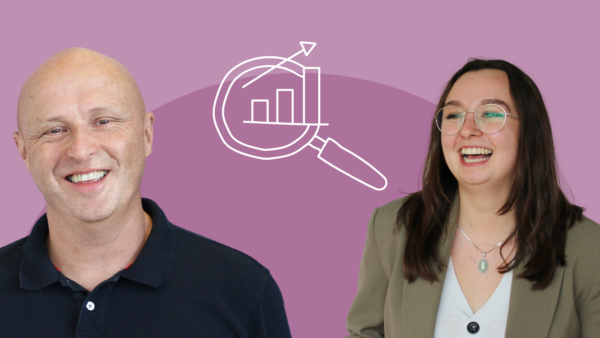Podcast transcript:
Why are teams dealing with so much change right now?
With all the change that we’re experiencing right now, it’s inevitable that teams are bearing the brunt. Teams are scaling up, scaling back, merging, de-merging, losing members, gaining members, shifting direction, in short in a continuous state of flux. And as a result, teams are having to navigate an ongoing pathway of development to maintain performance levels.
Is there a way to use strengths when supporting a team through its stages of development?
In today’s podcast, I want to smush together two tried and tested philosophies: the strengths approach and Tuckman’s model of team development, to give you some practical pointers on developing teams towards high performance using team members’ strengths.
What is the Tuckman model of team development?
First of all, Tuckman whaat? So for those people who’ve been in the team development business for a while, the name will be very familiar. But not to everyone. So here’s a quick reminder or refresher or starter guide. This model of team development and the stages that teams go through as they develop was put forward by Bruce Tuckman in like the 1960s. It was based on his observations of group dynamics and behaviour. And as a team development practitioner, I’ve got to say, there’s some serious truths in the model, which is probably why it’s still in wide use today. So let’s summarise the Tuckman Forming-Storming-Norming-Performing model. Oh and I will include Adjourning as well, which Tuckman added in 1977.
What are the stages Tuckman talks about in more detail and what should I know?
Forming: This is the initial stage, where team members are introduced to each other, and they begin to define their goals and objectives. It’s a ‘nice’ stage where people are super friendly and everything looks just dandy.
Storming: In this stage, team members may start to experience tension, differences of view and conflict as they begin to assert themselves and their ideas. This stage is where the team starts to work out their differences. It can feel uncomfortable and even, at times, dysfunctional. People can start to become confused, apportion blame, continuously seek clarity and defer responsibility and some team members (particularly those who are sensitive to choppy emotional waters) may get demoralised. And it is an inevitable aspect of team development because if you don’t go through this stage, and figure out your differences, you’ll never get to high performing. In fact, teams that don’t develop sufficient psychological safety to navigate this stage may well regress to ‘nice team’ status and revert to forming.
Norming: At this stage, the team has resolved any conflicts and developed a sense of cohesion. They start to establish group norms, shared values, and a common culture. Even if a team has done some work around values, mission, and agreed ways of working, it’s only at this stage that genuine agreement will be reached, after the team has been through the turbulence of storming. Teams that have learned to embrace constructive conflict will continue to encourage challenge to accepted norms and behaviour at this stage, to keep the team on the path to high performance. And team members start to work more independently, safe in the knowledge that they know both the ‘what’ and the ‘how’ of their roles.
Performing: This is the final stage, where the team is fully functional and working effectively together towards their shared goal. By now, the team is starting to operate in an interdependent way – independently at times and collaboratively where needed, rarely defaulting to senior leadership for decision-making as principles and boundaries for working are clear. And deliverables get delivered, stuff gets done, and the team celebrate achievements, wherever they may happen.
The final stage of Adjourning is worth a word, because it’s relevant in some teams, where a group if brought together to deliver something in a finite timeframe and the team will need to disband at the end. Although often, in these cases, some team members will stay together after the larger team has stopped existing, it’s still a big change and team members can feel a sense of loss going along with the team coming to an end. It’s important to recognise this and go through a process of reflection, establish any lessons learned and celebrate what the team has been able to achieve while together. In reality, sometimes some of this happens…often though, team members are so super busy and need to get on with the next task and the next team that the opportunity gets missed.
How does Tuckman work with strengths?
Now how does this relate to strengths? For me, knowing the individual strengths in the team and the overall strengths profile of the team itself can be super helpful as you can tap into strengths to help guide the team through each stage of team development.
Let’s go stage by stage, diving in to the Strengthscope strengths model to help us…
How can you use strengths at the Forming stage of team development?
Forming: In this stage, team members are getting to know each other and figuring out their roles and responsibilities. As a member of the team, you can help by:
- Being clear on the team’s purpose and goals – Leading, Enthusiasm, Optimism and Strategic mindedness might be really useful here
- Establishing guidelines for communication and decision-making – Collaboration and Efficiency could be a useful combo to sort out communication…And the Thinking strengths plus a dash of Results focus can be helpful for putting some structure to decision-making
- Encouraging open and honest communication, so everyone feels comfortable sharing their thoughts and ideas…strengths like Empathy, Persuasiveness and Courage will be at a premium here
- Making and deepening connections – team members benefit from seeing the human behind the role. Relationship building and Collaboration will help the team go broad AND deep in building out those connections.
How can you use strengths at the Storming stage of team development?
Storming: here, conflict and disagreements will come up as team members start to express their opinions and work styles clash. At this stage, you can help by:
- Acknowledging and addressing these conflicts head-on, rather than avoiding them – that’s Courage all day long, with a dose of Compassion to make sure that people’s feelings are acknowledged and Emotional control to stay objective when emotions flare up. Resilience and Optimism can also be great tools as the day to day challenges of teamworking increase and those who can see the positive in the challenge and thrive on it can help others get there
- Encourage team members to listen to each other’s perspectives and find common ground – Collaboration and Empathy in combo will be super helpful for this
- Getting clear on who does what – following the plan with Efficiency and also staying Flexible as roles may need to shift a little to accommodate what you’re learning as the team develops
How can you use strengths at the Norming stage of team development?
Norming: In this stage, the team begins to establish a shared identity and a sense of cohesion. Help is needed here to:
- Reinforce positive behaviour and promote team unity. Those with a Developing others strength may be well-placed to give people feedback when they’re supporting the team’s development and those with Courage strengths can be great at calling out when that’s not happening
- Encourage team members to celebrate their successes together and continue to communicate openly and honestly – Optimism, Enthusiasm, Empathy and Persuasiveness will all be useful
- Ensure everyone is clear on their roles and responsibilities and that the team has established norms for decision-making and communication – so back to the plan with Efficiency and Detail orientation, making sure that Thinking and Relational strengths are being used to the max.
How can you use strengths at the Performing stage of team development?
Performing: In this stage, the team is fully functioning and working well together to achieve their goals. At this stage, team members are working both independently and interdependently depending on the tasks they are delivering, so really you want people to be playing their own personal strengths as much of the time as possible, as well as tapping into their colleagues’ strengths, but now with a focus on the health of the team overall and making sure to maintain performance levels by red flagging any warning signs that arise.
How can you use strengths at the Adjourning stage of team development?
Adjourning: this final stage of learning, transitioning and mourning can be helped strengths-wise by:
- Encouraging a lessons learned approach – Common sense, Self-improvement and Developing others will be very useful to enable team members to mine the learning from their experiences
- Celebrating successes and achievements – Enthusiasm, Leading and Strategic mindedness strengths will help the team see the team at the macro level in terms of what it’s been able to achieve
- Acknowledging the change – Empathy and Compassion will help people through the emotional aspects of transition; Relationship building and Collaboration will help team members to keep the personal connections that are so important to us humans.
In conclusion – strengths x Tuckman = a powerful method to move teams through the stages
So there’s my smushing together of Tuckman and strengths with some tips for getting the most from individual and team strengths. At an individual team member level, when you’re experiencing change in your team, it’s really important to remember three things:
- You’re going to find some stages of team development easier than others, depending on your own strengths set
- Whatever strengths you have, you absolutely will have a role to play in each stage to help your colleagues and the team overall to navigate the stages of team development
- When you’re not feeling it, look to your teammates to provide you with strength, because within the team it’s more than likely that you will have all the resources, and the strengths, you need to get from storming to performing.
I hope you’ve found today’s episode useful, do check out the back catalogue of other Psychology@Work podcasts on the Strengthscope website resources section. Till next time, stay strong.













